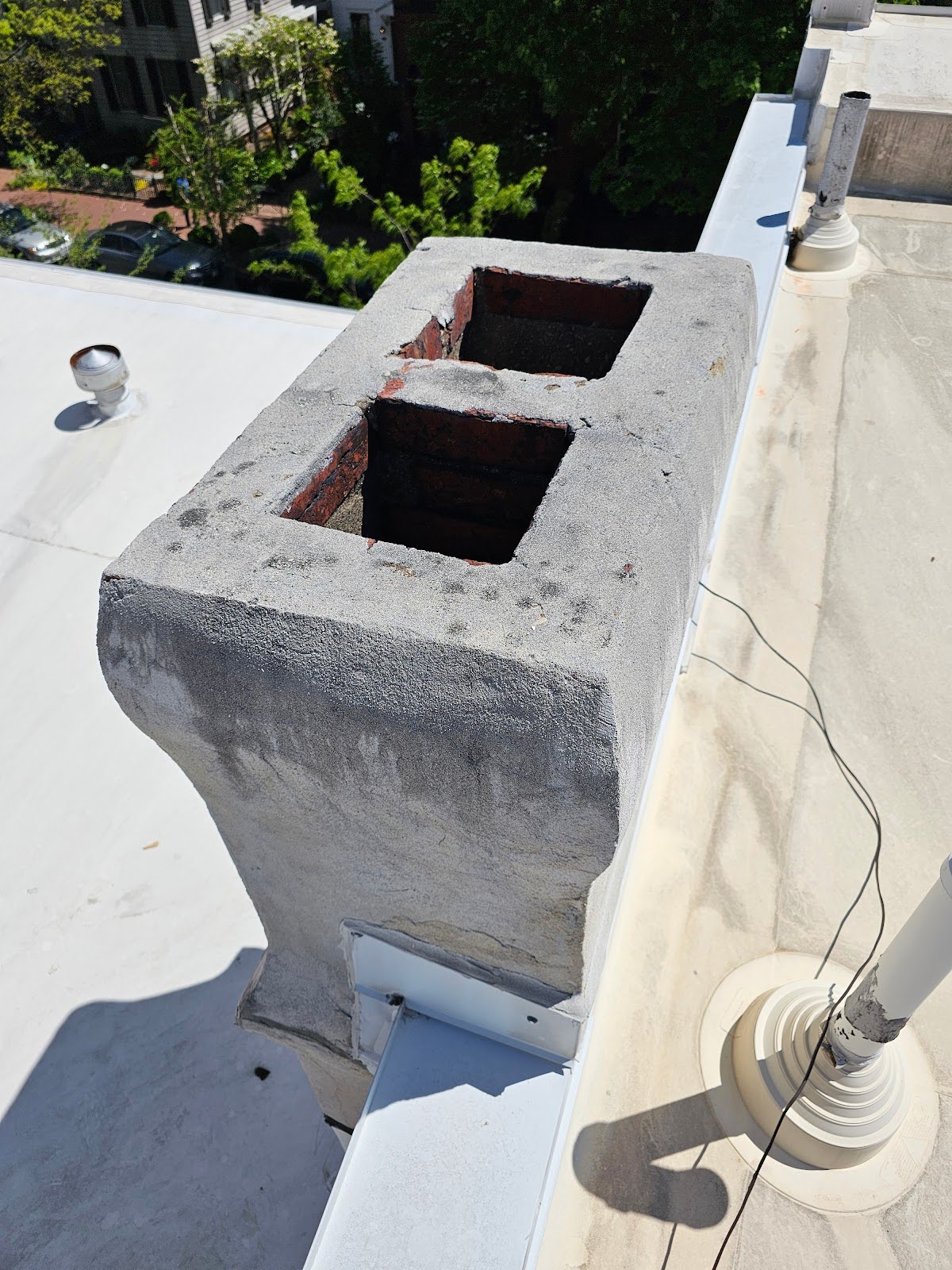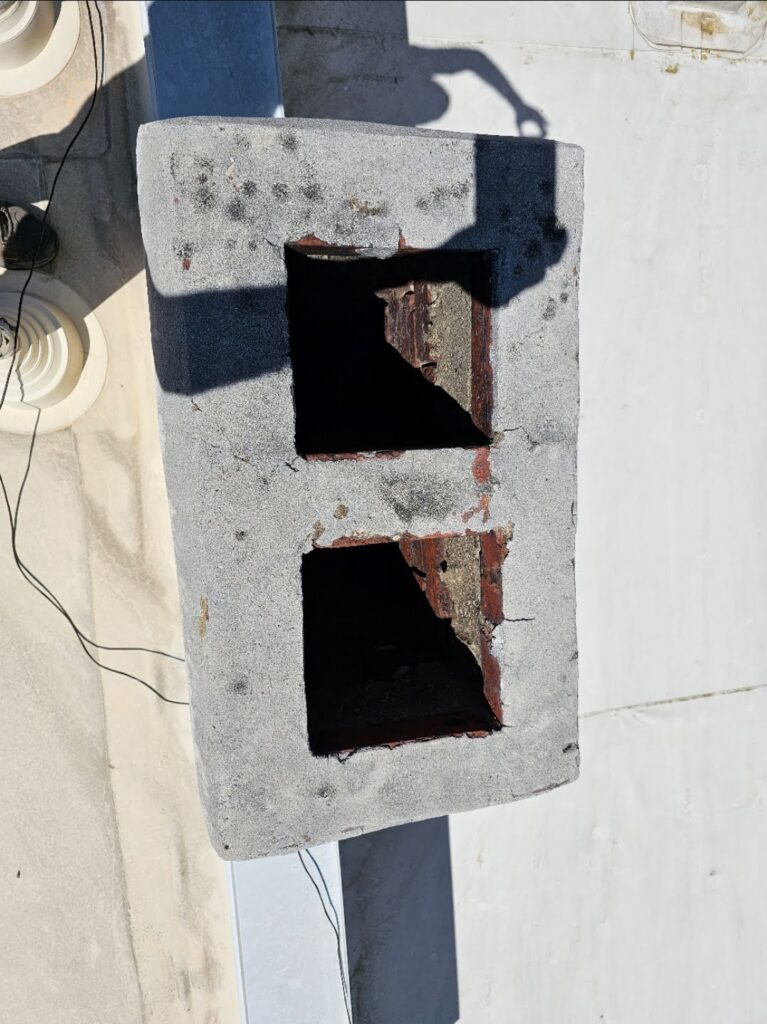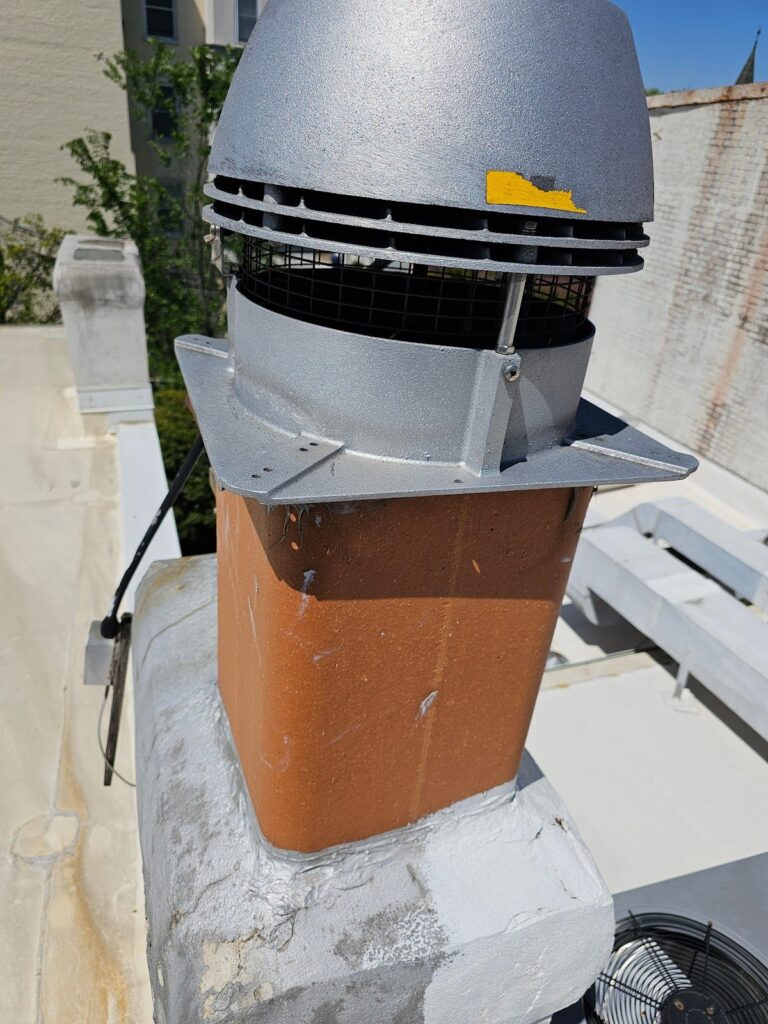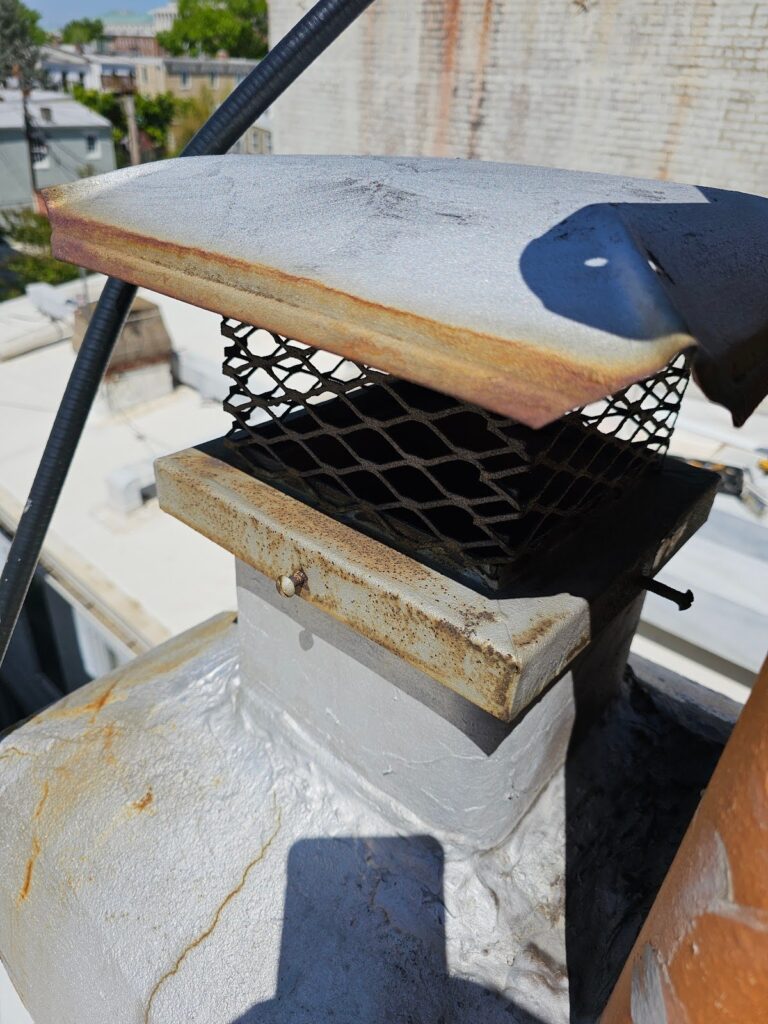How Crowns and Cappings Protect Your Chimney
In a previous blog article, here on our website, we took a look at few different areas of angles of a historic brick chimney. At that particular chimney, there were issues of spalling, and we were concerned that an improper type of mortar may have been used in restoration and tuckpointing or repointing.
Today, we’re going to switch gears slightly and look at some examples of alternative types of capping and crowns at similar but different masonry chimneys. As indicated in the title of the article, these particular chimneys also have been built with historic brick masonry, but they’re built in slightly different configurations and methodologies.
The chimney below looks like it’s a single CMU concrete masonry unit, aka cinder block, thickness, but it’s actually a typical historic chimney built with brick. It just looks different than we normally expect because it’s missing all of the crown, flue, and chimney capping. This particular example is a good opportunity to see the raw original brick construction with the other elements removed.
Normally, you can’t see directly into the brick quite so clearly because there is at least some elements covering the top of the brickwork. Interestingly, here, and this unique example, the issue of restoration at the brick masonry isn’t that it’s in need of repointing. Normally, repointing or tuck pointing is one of the things that these chimneys need the most, as it pertains specifically to the brickwork. Here though the other elements of the crown, flue, and capping are just completely missing but the substrate chimney appears to be in otherwise good condition.

The next picture below shows the top of the same chimney, but from this angle you can see farther down into the individual channels as the configuration is a double chimney that exhausts or events from two distinct areas of the building below. As you look down into these channels, you’ll probably notice that you can see the exposed brickwork because the flue is missing, not just at the chimney top, but also in the area of brick below. Often, terracotta flues become brittle and damaged and may need to be re-lined or replaced.

There are a variety of different types of chimney caps that work appropriately to keep rain or the majority of precipitation, at least, out of the interior of the chimney. It’s important to keep water out of that space because that chimney runs down directly into the interior of the building and if it’s exposed to significant amounts of precipitation or hydration the water can collect on the inside of the building and cause water damage to the interior finishes such as plaster and or wood flooring.
Evening in cases where water doesn’t permeate through the brick and mortar into the interior of the buildings finishes, the water can and likely will run down to the base of the chimney and cause slow deterioration of the footing and foundation.
The chimney cap shown in the next picture below is a little bit unique because we more often see chimney caps that flare out farther above the top of the chimney flue. This particular one might do the job though, well enough. If you look very closely, you might notice that there is a screen and a grill around the interior of the round opening. That grill will help to keep rodents out of the chimney.
In most cases a mesh or grill installed around the opening under a chimney cap is referred to as a spark arrestor. In historic times, when the only source of heat was firewood, spark arresters would catch embers as they floated up to the top of the chimney and could escape and set fire to an adjacent building. Even today though as the majority of historic fireplaces have been abandoned or removed from the historic buildings, the chimneys have been reused to exhaust more modern mechanical equipment and we still refer to the capping’s integral mesh as a spark arrestor.

A picture of a more typical and common type of chimney cap and spark arrestor follows in the next picture below for reference.

Our company, Dupont Tuckpointing and Masonry, specializes in masonry restoration, historic brick repointing, and tuckpointing services in the Washington D.C. area. These buildings are uniquely historic, and their preservation requires skilled masons who are technically trained in the best practices and knowledge of proper restoration techniques.
We understand the significance of maintaining the architectural integrity of these historic structures, and our team of experienced professionals is dedicated to delivering exceptional craftsmanship. Whether you require masonry restoration, tuckpointing, or brick repointing services, we are here to help.
At Dupont Tuckpointing and Masonry, we take pride in our work and strive to ensure that every project is executed with the utmost care and attention to detail. We are committed to preserving the rich heritage of Washington D.C.’s built environment for generations to come.
If you have any questions or needs regarding masonry restoration, historic brick repointing, or tuckpointing services, please do not hesitate to reach out to us. We would be delighted to assist you and provide you with the expertise and quality workmanship that your historic property deserves.
You can reach us by telephone at (202) 796-7644 and you can reach us by email from the contact form on our website at https://duponttuckpointingmasonrydc.com/contact-us/.




